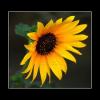Search the Community
Showing results for tags 'scores'.
-
Hi all, I’m looking for composers to contribute graphic scores for a score exchange project. Participants will upload graphic scores and there will be an open invitation for musicians to respond with an audio recording of their own personal interpretation of the score. Submissions should be for open instrumentation only (for any number of instruments), and not for specific instrumentation. You are encouraged to consider shape, colour, size, placement, words etc. Responses may be wide ranging - from digital art, to abstract painting, and video score/animation. Graphic notation can give a voice to musicians who find traditional notation limiting yet have the desire to express themselves through composition. Submission is open to anyone who is interested, not just professional composers. This online space will present opportunities for musicians and amateurs to interact and collaborate virtually. A driving motive behind the project is to bring people together in the time of social isolation. If you feel you need some inspiration, this article is a great place to start: https://www.theguardian.com/music/gallery/2013/oct/04/graphic-music-scores-in-pictures Alternatively, some examples of text scores if this is more your thing: Yoko Ono’s Grapefruit, George Brecht’s Water Yam Pauline Oliveros’ ‘Sonic Meditations Here is a link to the Google Form: https://forms.gle/eVyAo1e6UP1XQqmcA Thanks! Eliza 😊
- 18 replies
-
- 1
-

-
- collaborative
- john cage
- (and 11 more)
-
Hi, I know there is expert people here. I want to study some big score to learn orchestration. I'm interested in romantic-postromantic and modern orchestration. Any suggestions? Perhaps Mahler is too much to start. I thought about Tchaikovsky's Pathethique Symphony.... I love it and I've listened to it many times... Holst, The Planets? Thanks.
-
Hey everybody! Just wondering if any of you know of any pieces featuring harp and celeste together? I know of several orchestral scores with this instrumentation but I'm really interested in finding some smaller chamber works if you know of any (I'll gladly take new-to-me orchestral scores as well though, so feel free to add them if you know of any). I'm trying to get a feel for the sound of those instruments together.
-

2012-13 New-Music Consortium International Call For Scores
Guest posted a topic in External Competitions
2012-13 New-Music Consortium International Call for Scores Facebook page: www.Facebook.com/USFNewMusicConsortium. Application Deadline: 2013-01-15 The New-Music Consortium, University of South Florida School of Music’s student-run contemporary music organization, is pleased to announce its first ever New-Music Consortium International Call for Scores. Two works will be selected, with one winner each in the categories of acoustic and electronic composition. Selected compositions will be presented at concerts during the NMC’s Spring New-Music Concert, taking place on April 6, 2013. Selected composers will not receive a cash award and will be expected to provide professional performance materials by March 1st. Although a stipend for travel and lodging will not be provided, the winning composers are encouraged (but not required) to attend the performances. If the composers choose to attend the concert, the NMC will assist with travel arrangements to and from the airport in Tampa and provide lodging discounts through USF where possible. Composers of all nationalities under the age of 35 are encouraged to apply. There is no entry fee, and works may have been previously performed (further stipulations below). Composers who have graduated from the University of South Florida after the year 2007 are not eligible to apply. A panel consisting of members of the New-Music Consortium will evaluate the pieces and choose the winning entries. USF Composition Professor Baljinder Sekhon will facilitate the competition. All applications must be completed and received by January 15, 2013. The winning entries will be announced by February 15, 2013. RULES AND GUIDELINES Individuals may submit one work to each category. ACOUSTIC: The submitted work should be between 5-15 minutes in duration. The number of performers must be between 3-9 players. The instrumentation may be a subset of the following instruments. Works that require a conductor are acceptable. (2) Flutes/Piccolos Oboe/English Horn (2) Clarinets (Bb, Eb, or Bass Clarinet) Bassoon/Contrabassoon (2) Saxes (Alto, Tenor, and Bari) Horn (2) Trumpets (2) Trombones Bass Trombone Tuba (2) Percussion Piano (2) Violins Viola Cello Double Bass ELECTRONIC: The submitted work should be between 5-15 minutes in duration. Submissions of electronic works may be composed for audio playback up to a 5.1 speaker array. Submissions may be composed for any combination of audio playback, live electronics, and up to 4 performers (instrumentation should be selected from the list under ACOUSTIC guidelines). If necessary, a score, graphic representation, or other sufficient performance instructions must be included in the submission. OTHER: ~Works of any style, aesthetic, and notation will be accepted. ~The work must not exceed fifteen minutes in duration. ~The work may also call for an “unusual” (e.g. folk, traditional, rare, Partch) instrument. In such a case, the composer must provide both the performer and the unusual instrument for all rehearsals and the performance of the piece. NMC cannot assume any expenses for this performer or instrument (e.g. travel, accommodation, per diem, insurance). ~Only one entry per composer for each category (acoustic/electronic) will be accepted. ~A jointly written work will be considered a single entry. ~Submissions may have been performed previously, but pieces that have been played and/or recorded by a professional ensemble should not be submitted. ~No information that indicates or suggests the name or affiliation of the composer can appear anywhere on the entry work score or mp3. SUBMISSION PROCESS The submission process is entirely online. Please follow the directions below to ensure that your application is successfully received. ACOUSTIC: 1) Prepare an anonymous PDF score (TITLE.pdf) and an anonymous MP3 recording (TITLE.mp3) of your work. All indications of the composer’s identity, affiliation, or performing ensemble should be removed. 2) Include a form with the composer’s name, contact information, and one paragraph biography. (Biographies will be used when announcing the winning composer.) 3) Please send the above items as attachments to NMCSubmissions@gmail.com. 4) Please make the subject of your email “Last Name, First Name - Title of Piece.” It is imperative that the total size of these attachments be no larger than 20 MB. 5) Submissions will be handled by a third party. For questions and information, please write to: BSekhon@usf.edu. ELECTRONIC: 1) Prepare an anonymous PDF score (TITLE.pdf) if applicable, and an anonymous mp3 (TITLE.mp3) of your work. All indications of the composer’s identity, affiliation, or performing ensemble should be removed. 2) Include a form with the composer’s name, contact information, and one paragraph biography. (Biographies will be used when announcing the winning composer.) 3) Also include a tech sheet listing all hardware and software required, as well as a routing diagram. 4) Please send the above items as attachments to NMCSubmissions@gmail.com. 5) Please make the subject of your email “Last Name, First Name - Title of Piece.” It is imperative that the total size of these attachments be no larger than 20 MB. 6) Submissions will be handled by a third party. For questions and information, please write to: BSekhon@usf.edu. PUBLISHED DATE: 14 Dec 2012 -
What are your preferred solutions for printing and binding very short scores -- those that would seem silly to spiral (or comb) bind? For example, a two-page score for a solo instrument: I'd usually just print (one-sided) on heavy stock. A two-page score for SATB: a tougher call and depends on context. 11x17 page folded could be ideal (title page on the front, music on the two interior pages, program notes / bio / etc. on the back). Or four individual pages stapled, for a more informal context or when you don't have access to 11x17 duplication. Where do you generally draw the line re. what number of pages is appropriate for spiral (or comb) binding? Is there a page or summary document on the web about standards for such things?



